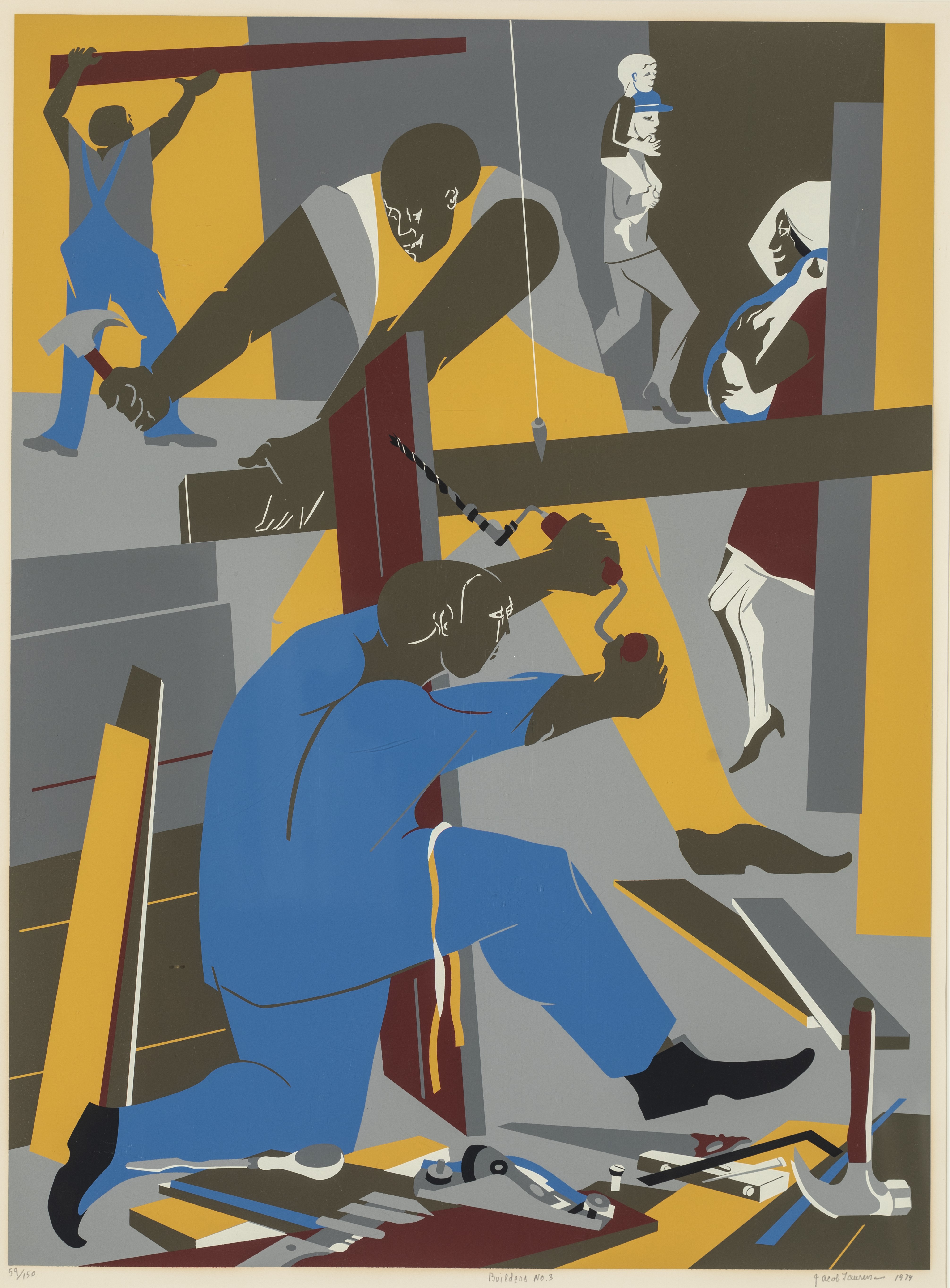
This exhibition honors the significant contributions to the university by William and Electra Stamelos over the last thirty-five years. Electra Stamelos (1927-2008) was a beloved UM-Dearborn art lecturer from 1980 to 1994 and an accomplished artist. She also held the position of Director of Art Acquisitions and Exhibitions for UM-Dearborn for many years and taught on the Ann Arbor campus. Bill has been a devoted university donor and gallery volunteer for many years, which included acting as honorary curator for a period of time, and he continues to be a generous donor to the department. Electra and Bill contributed greatly to the university's art collection for decades including donating the majority of Electra's body of work and many other art pieces that they collected throughout their years together.
Electra was born in Jersey City, New Jersey in 1927 and was raised and educated in Washington D.C. Bill was born in Detroit in 1928 and met Electra while stationed in the army in Virginia. It was a common practice at Electra's family church to invite visiting service members over for Sunday lunch. Bill was invited over by Electra's family one day after church, and the rest is history! They were married in 1953 and moved to the Detroit area soon after.
Electra earned her B.F.A. from Wayne State University, Detroit in 1970 and her M.F.A. from Eastern Michigan University, Ypsilanti in 1976. She also studied at the Corcoran Museum School and the National Art School in Washington D.C. and the Center for Creative Studies in Detroit. Russell Keeter and Kingsley Caukins were big influences for her as professors.
Electra began teaching at UM-Dearborn in 1980 and quickly immersed herself in the regional arts community. She was devoted to her students and spent many late evenings on campus mentoring them. She also worked tirelessly helping coordinate gallery exhibitions and receptions and developing the university's remarkable art collection. Electra organized monthly art critiques with her artist colleagues in the community and was heavily involved with many regional arts organizations. Bill had a long career with Packard and Ford and nurtured his own artistic talent in photography. He says his passion for art is "because of Electra."
Electra was highly allergic to oil paint. She used only acrylic and watercolor and painted mostly still-lives, florals, landscapes and portraits. Electra preferred to paint during nighttime hours, and she regularly painted all night long and then slept a few hours and headed off to teach! She and Bill travelled the world and kept homes with painting studios in Florida and New Zealand.
Electra derived inspiration mostly from the natural world and she planted and took care of a glorious garden which Bill photographed. Bill's light-filled images of the garden the couple shared were a significant inspiration for many of Electra's pieces. She also painted portraits of loved ones, favorite places and even celebrated the unlikely beauty of complicated assemblages of ordinary objects like the buttons, thimbles, drink umbrellas and spools of thread jumbled together on her work table.
Electra had a sharp eye and continually challenged herself by experimenting with new techniques for communicating what she saw, felt and imagined. She moved effortlessly between abstract and representational imagery dissecting many of her compositions into smaller views with varying perspectives. Electra described her work as figurative abstraction with many levels of interpretation, and she often filled every inch of the canvas. She had a talent for light and color and often painted from two trays of forty-eight colors each, using paint made by three different manufacturers for each color.
I like my work to reflect or express the exuberance and challenges of life, as I see them - I choose the positive, hopeful and beautiful aspects. My art is not an imitation of nature, but rather a heightened absorption of formal criteria such as light, color and form... an intensification of nature and my reaction to it.
Watercolor is a medium of extremes. It can be simple and spontaneous, or it can require the kind of precise discipline that is generally seen in my paintings... To be able to use watercolor, one must know its characteristics. What does the paint do? -it runs, drips, bleeds and dries. The experienced watercolorist welcomes 'wet' characteristics and adds 'dry' techniques. These two methods, wet and dry, relate directly to hard and soft edges. Playing these techniques against each other is a good way for me to express myself. Hard and soft edges carry a lot of positive information. Besides emotional impact, they explain form and direct the eye.
I find painting a watercolor to be hard work. Each painting is a challenge that requires concentration, time and effort. I dislike repetition, so that every time I paint, I try to do something more difficult. I think I work in a logical fashion. But actually I deal with moment to moment decisions... if art is a remembered sensory experience, I can only paint what I see and feel.
--- Electra Stamelos
Electra's artwork has been exhibited throughout the United States for decades and has won numerous awards. It has been acquired by a large number of private and public art collections across the country.
During their life together, Bill and Electra gathered an impressive collection of artworks, mostly by Electra's favorite art teachers and their artist friends. This exhibition displays a large majority of Electra's artwork owned by UM-Dearborn, along with select works by other artists that were donated by the pair. When Electra passed, Bill felt it important to keep as much of her body of work together as possible and to give it a home at the university that had been so significant in her life. It is a pleasure to share these treasured works with the campus and greater community.


Jacob Lawrence (1917-2000), Serigraph print, 1974
Gift of Gilbert M. Frimet,
Collection of UM-Dearborn (1980.065)
Photographed by Tim Thayer
This powerful serigraph print from the permanent collection was created by Jacob Lawrence (1917-2000), one of this century's most widely acclaimed artists.
Lawrence was born in Atlantic City, New Jersey, but moved to Harlem, New York, at 13. He is among the few painters of his generation who grew up in a Black community, received instruction primarily from Black artists, and was influenced by the experiences of Black individuals.
Lawrence's artwork portrays the lives and struggles of the Black community, capturing their experiences through several series focused on figures such as Toussaint L'Ouverture, Frederick Douglass, and Harriet Tubman, as well as themes related to life in Harlem and the civil rights movement of the 1960s. His style is characterized by vibrant colors and abstract forms.
In the 1940s, during a time of widespread segregation, Lawrence broke racial barriers by becoming the first Black artist whose work was acquired by the Museum of Modern Art in New York City.
He stated, "If at times my productions do not express the conventionally beautiful, there is always an effort to express the universal beauty of man's continuous struggle to lift his social position and to add dimension to his spiritual being."
Researched and written by:
Julianna Collins, Stamelos Gallery Center former intern, UM-Dearborn art history/museum studies graduate, Class of 2025